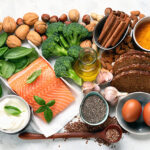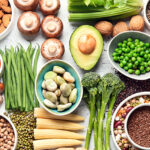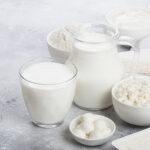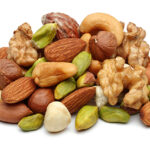GOOD CARBS FOOD FACTS A TO Z
Honey
Honey is made by bees after gathering nectar from flowers. It’s a beautiful image and a lovely example of the generosity of Mother Nature (or the greed of man, depending on your world view). It’s also a great example of how food can be regional. Much like winemakers talk of the “terroir’ (soil, climate, topography) influencing the characteristics of wine, the characteristics of honey are influenced by the flowers within gathering distance of the hive.

Honey, as they say, is “so hot right now” due to the trend of growing your own food. From the mega-trend of growing veggies and herbs in your backyard or balcony is emerging the DIY apiculture (bee-keeping) movement. There are now services such as Sydney’s Urban Beehive that will install a hive at your place and help keep your buzzing friends healthy, happy and producing your own honey “à la maison”. And there is this book for beginners on the subject. Small scale beekeeping is also being encouraged to help save our honey bees, which are under threat from all sides: primarily from colony collapse disorder, but there are other problems as well such as varroa mite and in Australia the risk of Asian bees breeching our borders. Suffice to say we’re all in trouble if the bees disappear because of their pivotal role in pollinating food crops.
From a health perspective, overall, honey is no better than table sugar and nutritionally they are very similar. However, don’t give honey to babies under 12 months. Why? It can become contaminated with the bacteria clostridium botulinum, and children under the age of 12 months are particularly sensitive to the toxin produced by the bacteria – botox (yes, the same one used in facial injections for anti-aging treatments).
The clever thing about honey is that besides tasting wonderful it has all kinds of medicinal uses. It’s great for soothing sore throats (traditionally mixed with lemon juice), more effective than over-the-counter medicines for children’s coughs, and special “active” honeys such as Manuka from New Zealand are used to treat wounds.
In terms of culinary uses, the options are many and varied, but sometimes the simple things are the best. Fresh wholegrain toast with honey is a reliable classic, as is porridge with a golden drizzle. Personally, I think peanut butter is wonderful with honey on toast. Chinese honey soy chicken is a lovely dalliance between sweet and savoury and exemplifies how honey goes so nicely with meats of all kinds: honey glazed ham is but one famous example. Naturally honey is gorgeous in baked goods and delicious in hot or cold drinks such as smoothies, cordials, teas and coffee. And here’s one out of the box: it’s delicious with cheese. “The lovely Spanish tradition of eating cheese with honey is worth adopting. Mel y mato is a popular Catalan dessert of ‘mato’, a fresh unsalted cheese made from cow’s or goat’s milk (you can substitute ricotta but it won’t be so good) with a dribble of honey ‘mel’ in Catalan.” – Claudia Roden, The Food of Spain. – Thanks to dietitian Nicole Senior for this report.








